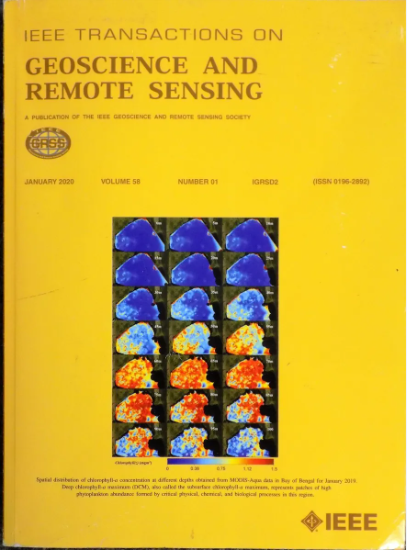Integrated Networks for Viscoelastic FWI: Mapping From Q to Relaxation Variables and Quantifying Modeling Error
IF 8.6
1区 地球科学
Q1 ENGINEERING, ELECTRICAL & ELECTRONIC
IEEE Transactions on Geoscience and Remote Sensing
Pub Date : 2024-11-12
DOI:10.1109/TGRS.2024.3496812
引用次数: 0
Abstract
In the conventional approach to viscoelastic full waveform inversion (FWI) utilizing the generalized standard linear solid (GSLS) model, the quality factor (Q) is usually not directly inverted. Instead, this method converts Q into a suite of relaxation variables before inversion. Consequently, viscoelastic FWI entails the inversion of both elastic and relaxation models, with a subsequent conversion of relaxation variables back to the Q model to obtain final results. This method is partially due to the accurate intricate relationship between Q values and relaxation variables, where the mapping functions between these two sets are not simple inverses of each other. We introduce an approach that incorporates a multilayer perceptron (MLP) that is pretrained to learn complex mapping from Q values to relaxation variables. This MLP is then seamlessly integrated into a recurrent neural network (RNN)-based GSLS viscoelastic FWI framework, establishing a computational graph, linking Q models and elastic models to data discrepancies, facilitating the direct inversion of both Q and elastic models. To address the inherent uncertainty in the MLP’s mapping process, we apply Monte Carlo (MC) dropout within the neural network, quantifying the uncertainty of converting Q values into relaxation variables. Assuming a constant Q model, this uncertainty quantification method highlights the limited ability of relaxation variables to represent a constant Q model precisely. The feasibility of adapting our method for frequency-variant Q values appears straightforward. We also explore how this limitation, essentially a modeling error, influences the accuracy of forward modeling data. Our numerical results reveal that this modeling error has apparent impacts on the inversion outcomes for both elastic and attenuation models, underscoring the critical nature of this error in the viscoelastic FWI processes.粘弹性 FWI 的集成网络:从 Q 到松弛变量的映射以及量化建模误差
在利用广义标准线性实体(GSLS)模型进行粘弹性全波形反演(FWI)的传统方法中,通常不直接反演品质因数(Q)。相反,这种方法会在反演之前将 Q 转换为一系列弛豫变量。因此,粘弹性 FWI 需要反演弹性和松弛模型,然后将松弛变量转换回 Q 模型,以获得最终结果。这种方法的部分原因是 Q 值和松弛变量之间存在精确的复杂关系,这两组变量之间的映射函数并不是简单的互逆关系。我们引入了一种结合多层感知器(MLP)的方法,该感知器经过预训练,可学习 Q 值与松弛变量之间的复杂映射。然后,将该 MLP 无缝集成到基于递归神经网络 (RNN) 的 GSLS 粘弹性 FWI 框架中,建立计算图,将 Q 模型和弹性模型与数据差异联系起来,促进 Q 模型和弹性模型的直接反演。为了解决 MLP 映射过程中固有的不确定性,我们在神经网络中应用了蒙特卡洛(Monte Carlo,MC)剔除,量化了将 Q 值转换为松弛变量的不确定性。假定 Q 值恒定,这种不确定性量化方法凸显了松弛变量精确表示 Q 值恒定模型的能力有限。将我们的方法应用于频率变化的 Q 值似乎很简单。我们还探讨了这种局限性(本质上是一种建模误差)如何影响前向建模数据的准确性。我们的数值结果表明,这种建模误差对弹性模型和衰减模型的反演结果都有明显的影响,突出了这种误差在粘弹性 FWI 过程中的关键性。
本文章由计算机程序翻译,如有差异,请以英文原文为准。
求助全文
约1分钟内获得全文
求助全文
来源期刊

IEEE Transactions on Geoscience and Remote Sensing
工程技术-地球化学与地球物理
CiteScore
11.50
自引率
28.00%
发文量
1912
审稿时长
4.0 months
期刊介绍:
IEEE Transactions on Geoscience and Remote Sensing (TGRS) is a monthly publication that focuses on the theory, concepts, and techniques of science and engineering as applied to sensing the land, oceans, atmosphere, and space; and the processing, interpretation, and dissemination of this information.
 求助内容:
求助内容: 应助结果提醒方式:
应助结果提醒方式:


